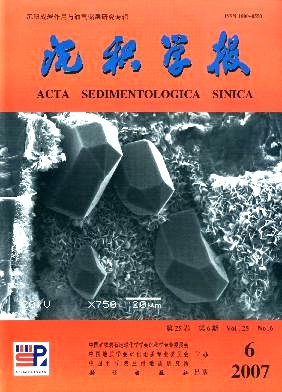四川盆地东北部三叠系飞仙关组硫酸盐还原作用对碳酸盐成岩作用的影响
- Received Date: 1900-01-01
- Rev Recd Date: 1900-01-01
- Publish Date: 2007-12-10
-
Key words:
- NE Sichuan basin
Abstract: Sulfate reduction has been recognized recently as a process of geologic significance, and is common and widespread in the Feixianguan of Triassic, NE Sichuan Basin of China. The widespread distribution of calcite cements with extremely high strontium concentrations (more than 3 000×10-6) indicate that the digenesis of Feixianguan carbonate have been strongly influenced by an unconventional strontium-rich pore fluids. The interstitial fluid with strontium concentration much higher than normally encountered is resulted by bacterial and (or) thermochemical sulfate reduction which removed the SO42- from the system and therefore, changed the solubility of celestite (SrSO4). The strontium in diagenetic pore fluids is original from the recrystallization of metastable aragonite and highMg calcite to diagenetic lowmagnesium calcite and dolomite. This mechanism must be related to the large and superlarge scale celestite deposits of Triassic, NE Sichuan Basin of China. Both H2S and CO2 are the common products of bacterial and thermochemical sulfate reduction. The increment of Gibbs free energy (ΔG) and equilibrium constants (K) for the reactions of
H2S(aq)H2S(g) and CO2(aq)CO2(g) were calculated here. The results indicate that, in the temperature interval of 25℃ to 220℃, the equilibrium constants (K) for the two reactions increase from about 10 to 240 and from about 20 to 500, respectively, and always more than 1. Both H2S and CO2 are more preferable to gas than aqueous solution, and the solubility of H2S and CO2 drop down with the increase of temperature, so the lower ability of dissolution for carbonate of H2S and CO2 in the deeper burial environment should be expected. The lower temperature diagenetic setting, hydrothermal migration upward, the mixing of oxygenated groundwater and aqueous solution of H2S to form sulfuric acid,and metal sulfide precipitation are the four ways to enhance the ability of dissolution of CO2 and (or) H2S for carbonate. The carbonate dissolution by H2S and CO2 during earlier diagenesis is closer relation to bacterial sulfate reduction rather than thermochemical sulfate reduction. The presence of faults is an important condition for the path of H2S and CO2 fluidflow upward. The facies such as bankmargin lime grainstones or reef limestones with more primary porosity and permeability are the preferential sites for lateral fluid flow and carbonate leaching. The uplift of the crust and karstification can provide a geologic setting for the oxidation of H2S in order to enhance the leaching ability. We hope that the research conclusion here is helpful for the prediction of good quality reservoir in the Feixianguan carbonate of Triassic, NE Sichuan Basin of China.






 DownLoad:
DownLoad: